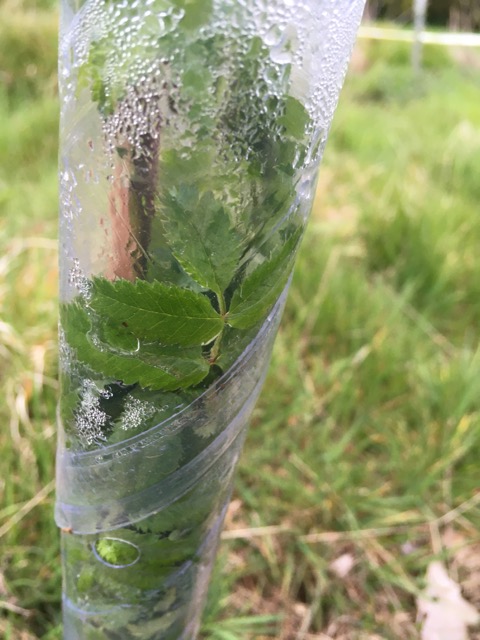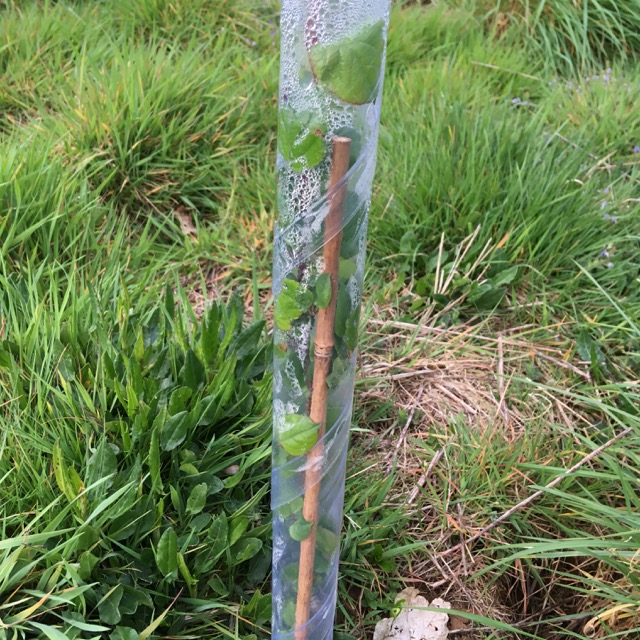Planting of Saplings in the Ridlington Playing Field
 Native Tree Saplings
Native Tree Saplings
The Woodland Trust has kindly donated 3 tree varieties to the Ridlington Playing Field. We were given 5 of each of Crab apple, Rowan and Hazel.
Luckily just before the national lockdown in the UK, Mike, Mariane, Ruth and Chris planted 15 samplings at the back of the Playing Field in the area that, you may have already noticed, has been temporarily cordoned off. A big Thank You to Mariane for organising the receipt of these young samplings.
A few snippets of information on the trees in case you did not already know.
Crab apple, Malus sylvestris
Crab apple is a wild ancestor of the cultivated apple with sweetly scented, pink–white blossom in spring. The fruits make a rich amber-coloured crab apple jelly. Wildlife loves it; the flowers are a good source of early pollen and nectar for insects, particularly bees. Birds like fieldfare, song thrush, blackbird and redwing enjoy the fruits, as do some mammals.
Hazel, Corylus avellana
In spring, hazel is laden with lovely “lambs tail” catkins and in autumn it produces delicious nuts. The hazel dormouse eats the caterpillars it finds on the leaves and the nuts to fatten up for winter. Woodpeckers, nuthatches, jays and native mammals all love eating the hazelnuts too.
Rowan, Sorbus aucuparia
Are a wildlife magnet and a pretty tree in all seasons. Rowan leaves turn a lovely burnt red in autumn. In spring it produces clusters of creamy-white flowers followed by vibrant, orange-red berries in autumn. It’s bitter, raw berries are rich in vitamin C and can be made into a delicious jelly for meats and cheeses. Its other common name is mountain ash. Here too the flowers provide pollen and nectar for bees and other pollinators, while blackbirds, thrushes, redstart and redwing eat the berries.
Should you wish to find out more, you can browse the Woodland Trust’s website using the following link. https://www.woodlandtrust.org.uk/blog/2019/03/british-trees-to-plant-in-your-garden/
All in all we continue to encourage wildlife to flourish and hope that everyone who uses the Playing Field also will get some pleasure and enjoyment from them.
The photos show the planting party at the beginning of March 2020 and the growth of the samplings so far (May 6th). We will continue to keep you updated as to their progress.
The Playing Field Planters




